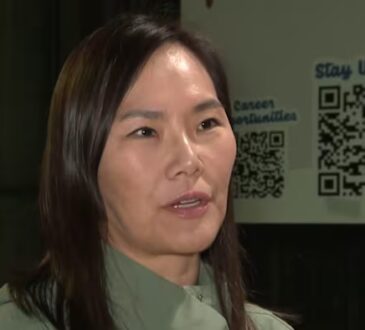
One of fashion’s biggest problems is also its most fundamental: fit. With no standardized sizing across the fashion industry, ill-fitting clothes and subsequent returns are damaging consumer trust, brands’ balance sheets and the planet. Vogue Business’s recent consumer sizing survey showed just how big the problem is getting, at the same time that brands are grappling with a broader luxury slowdown. Findings show that poor fit (43%) and inconsistent sizing (36%) are among consumers’ top deterrents to purchasing garments from a brand or retailer, and ill fit is the leading cause of returns, at 38%.
Few people have spent as much time thinking about fashion’s fit problem as Phoebe Gormley, who founded the first women’s tailor on London’s Savile Row when she was 20 years old. “I spent 10 years listening to women complain about sizing. No matter the age, no matter the price point, no matter where they shopped, every woman said the same thing to me: why is sizing so shit?” she tells Vogue Business. “It really feels like the fashion industry has lost all sense of garment sizing.”
Gormley thinks AI might be the fix. She founded a fit operating system for fashion, Fit Collective, which uses AI to provide brands with the data they need to improve how clothes are made, using size and fabric insights from customer returns. Today, the startup is announcing it has closed a £3 million pre-seed funding round from AlbionVC, Superseded, True and January Ventures, with a £324,000 UK government grant — funding she says will mainly go toward hiring engineers to work on the machine learning behind Fit Collective. Since launching in late 2023, the startup has brought on 10 clients, including Rixo, Boden, Ro & Zo, L’Estrange, and The Sports Edit (part of Marks & Spencer). This has given her a wealth of data to analyze where fashion’s sizing falls short.
Why fashion is getting fit wrong
Sizing is a problem that Gormley says plagues women more than men. While men’s return rates hover around 15%, womenswear, depending on the price point, jumps to 40–50%, per Fit Collective findings. For luxury womenswear, Gormley says, return rates tends to be even higher at around 60%. These gender discrepancies are largely down to womenswear designs deviating from the original “blocks” (i.e., size templates) more than menswear, thanks to more elaborate designs and a larger range of fabrics, from super lightweight to hyperstretch, skewing fit. As brands start to size their garments based on previous garments, this leads to more deviation from the original sizing blocks over time.
“For luxury, the returns problem is even higher, because customers purchase less and consider the garments more — meaning it’s a more careful decision, but also that luxury brands are sitting on a lot less returns data than mass clothing brands are,” Gormley says.




